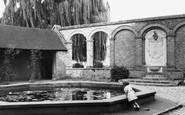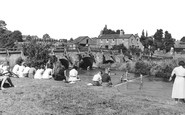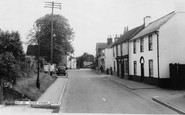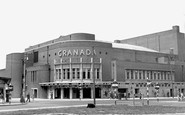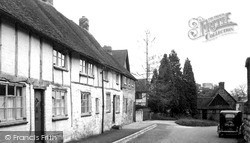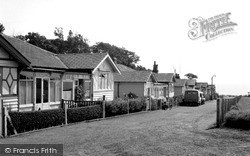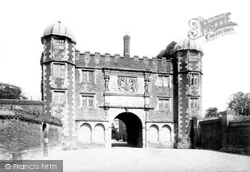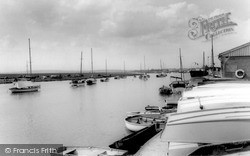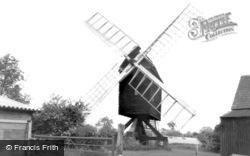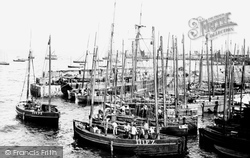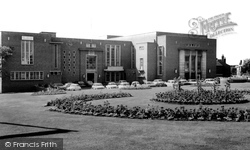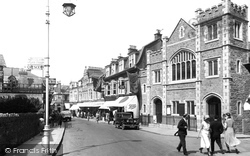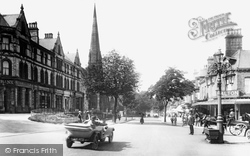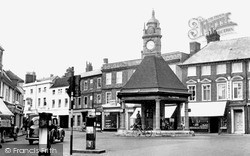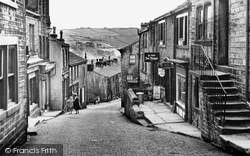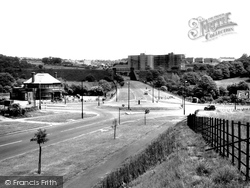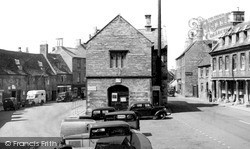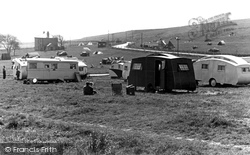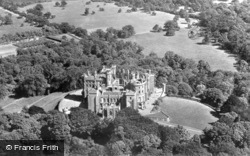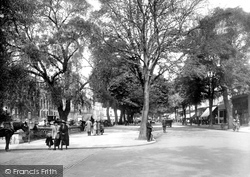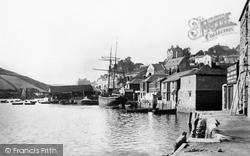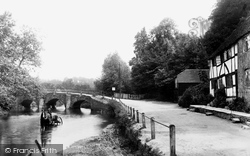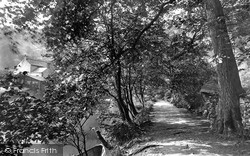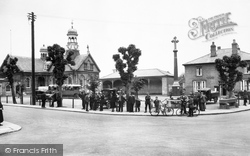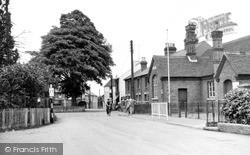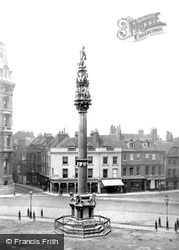Places
18 places found.
Those places high-lighted have photos. All locations may have maps, books and memories.
- Hythe, Kent
- Hythe, Hampshire
- Small Hythe, Kent
- Bablock Hythe, Oxfordshire
- Methwold Hythe, Norfolk
- Hythe, Somerset
- Hythe, Surrey
- Hythe End, Berkshire
- The Hythe, Essex
- Egham Hythe, Surrey
- West Hythe, Kent
- New Hythe, Kent
- Broad Street, Kent (near Hythe)
- Horn Street, Kent (near Hythe)
- Newbarn, Kent (near Hythe)
- Newington, Kent (near Hythe)
- Broad Street, Kent (near Hythe)
- Stone Hill, Kent (near Hythe)
Photos
360 photos found. Showing results 1,701 to 360.
Maps
101 maps found.
Books
10 books found. Showing results 2,041 to 10.
Memories
4,406 memories found. Showing results 851 to 860.
Phillips Memorial
I worked at Smiths Industries and when it was nice weather some of the other girls and I would take our lunch and sit in by the fish pond. I often wonder what happened to the others when Smiths moved. It was previously Waymouth Gauges near Godalming Station.
A memory of Godalming in 1966 by
Schools And Air Cadets
I remember Grays as if it was yesterday. After the war, going to the Open Air School up by the Oaks public house, then attending Quarry Hill School with Miss Hill and Mr Gray before the 11 plus. Passing the exam and going to the ...Read more
A memory of Grays in 1950 by
Happy Days At Sheephatch Camp School
I spent some happy times whilst a boarder at Sheephatch Camp School, Tilford. I was staying there in the very bad winter of 1947 when we were snowed in for several weeks. Had long walks in the snow to Crooksbury ...Read more
A memory of Tilford in 1947 by
Bomb Blast `siding` Margaret Street/Victoria Street.
I recall as a young boy of 7 or 8, that I was among a group of friends playing on the siding at the bottom of Margaret Street. We, as friends, found the bomb on the Rhigos Mountain and carried it ...Read more
A memory of Treherbert in 1943 by
The Heap Family/ Lovick Family
My dad was born in 1923 at 23 East Street, Barnoldswick. He was born out of wedlock to Lilian Victoria Heap; who lived with her father, Harry Heap, in East Street. My father, Harold Heap, had very few memories of ...Read more
A memory of Barnoldswick in 1920 by
Born On Sutton Flats
I was born on Sutton Flats (now demolished) Pendleton in 1941. My first vague memory was sitting under a table with a blanket draped over it and a lit candle (must have been an air-raid on at the time). My first real memory was a ...Read more
A memory of Salford by
Mixture
The quaint older houses on the right now faced new bungalows to our left, and on our left is another walkway to the primary school. Now Jimmy came to live in one of the bungalows and then he came to our school when he was about 10. He was from ...Read more
A memory of Eastry by
Piddinghoe
My name was Susan Penfold and I grew up in a small house on Evelyn Avenue in Newhaven. My mother's mother was one of seventeen children born in Piddinghoe. I used to visit my grandmother's home and aunt Tops, auntie Else and uncle Pearce ...Read more
A memory of Newhaven in 1955 by
My Life In Battersea
We used to live in Henning Street in Battersea, we were always in Battersea Park and "the jungle" which was a playpark for teenagers with ropes and pulleys, my brothers had great fun in there whilst my friends and I were always ...Read more
A memory of Battersea in 1960 by
Growing Up In Penge (1947 Onwards)
I have said that my early life began in Penge in 1947, but that is only as far back as I can remember. Although I was still only two then, I do have a very good memory. I can remember while I was in a pram outside the ...Read more
A memory of Penge in 1947 by
Captions
4,899 captions found. Showing results 2,041 to 2,064.
The castle was to the south of these cottages; its outer bailey was bisected by the later Castle Lane.
Twyford is a large village near Winchester, divided by the main road. This tree can be found in St Mary's churchyard.
In 1779, the peace of this tiny village was shattered by the noise of gunfire when the ships of the Royal Navy and the ships of the United States came together in the Battle of Flamborough Head.
The flatness of the Wolds is interrupted by the hill on which the tiny hamlet of Brigham sits.
A Danish invasion fleet arrived here in 893, commanded by the warlord Haesten. His fort seems to have been where the church was subsequently built.
Owned by the Cambridge Preservation Society, it is preserved complete, and is open to visitors.
Huge shoals appeared off Land's End in July and swam along the coast to be taken in seine nets by the Mounts Bay fleets.
Only the left-hand wing of the building is occupied by the police, while the right-hand wing is the Civic Hall.
The population in 1871 was just over 1,000, but by the 1950s it had grown to 12,000. The hills and slopes were soon smothered with retirement bungalows.
Hargreaves' cycle shop on the left appears to be bravely ignoring the impending domination of the Grove by the automobile.
It had four illuminated dials and two drinking fountains; it cost £278-5s, subscribed by the townspeople.
The Parsonage Museum provides a fascinating insight into the bleak and often solitary life led by the Bronte family. Half a century ago, Ye Old Tea Shoppe was the only concession to tourism.
Delayed by the outbreak of the Second World War, the programme continued in the 1940s and included plans to build 53,000 new homes. However, building always lagged behind demand.
The Victorian Town Hall in the centre of the Market Place was built by the Watts-Russell family; today it is occupied by local businesses.
Between the wars, Brighton boomed: by the mid-1930s it was packed at weekends.
Prominent for miles around, it was built menacingly by the Conqueror's standard bearer, Robert de Todeni, on an escarpment rising some two hundred feet above the surrounding countryside.
Holst composed music inspired by the local scenery long before he became famous for 'The Planets' and 'Egdon Heath'.
The town has become a haven for leisure yachtsmen, with many of its shops devoted to water sports and its old inns occupied by the sailing fraternity.
In 1902, the bridge and the cottages on the right were bought by the National Trust for just £400.
The tree-lined walks by the side of the River Derwent known as the Lovers' Walks have been popular with visitors since the town became a tourist honeypot in the 19th century.
Lloyds Bank (left), built in Bath stone by Rendells & Son of Devizes in Tudor style in 1922, was designed by the bank's building inspector at Salisbury.
Inside is a splendid collection of a hundred portraits of members of celebrated East Anglian families, which were bequeathed by the antiquary Prince Frederick Duleep Singh.
Although actually very old, this is another Medway-side village that was left with a distinctly Victorian appearance by the 19th century building boom, when it was a source of brick earth and also chalk
The monument stands in the centre of an area known as the Sanctuary by the west door of the abbey and on the site of the abbey gateway.
Places (18)
Photos (360)
Memories (4406)
Books (10)
Maps (101)



